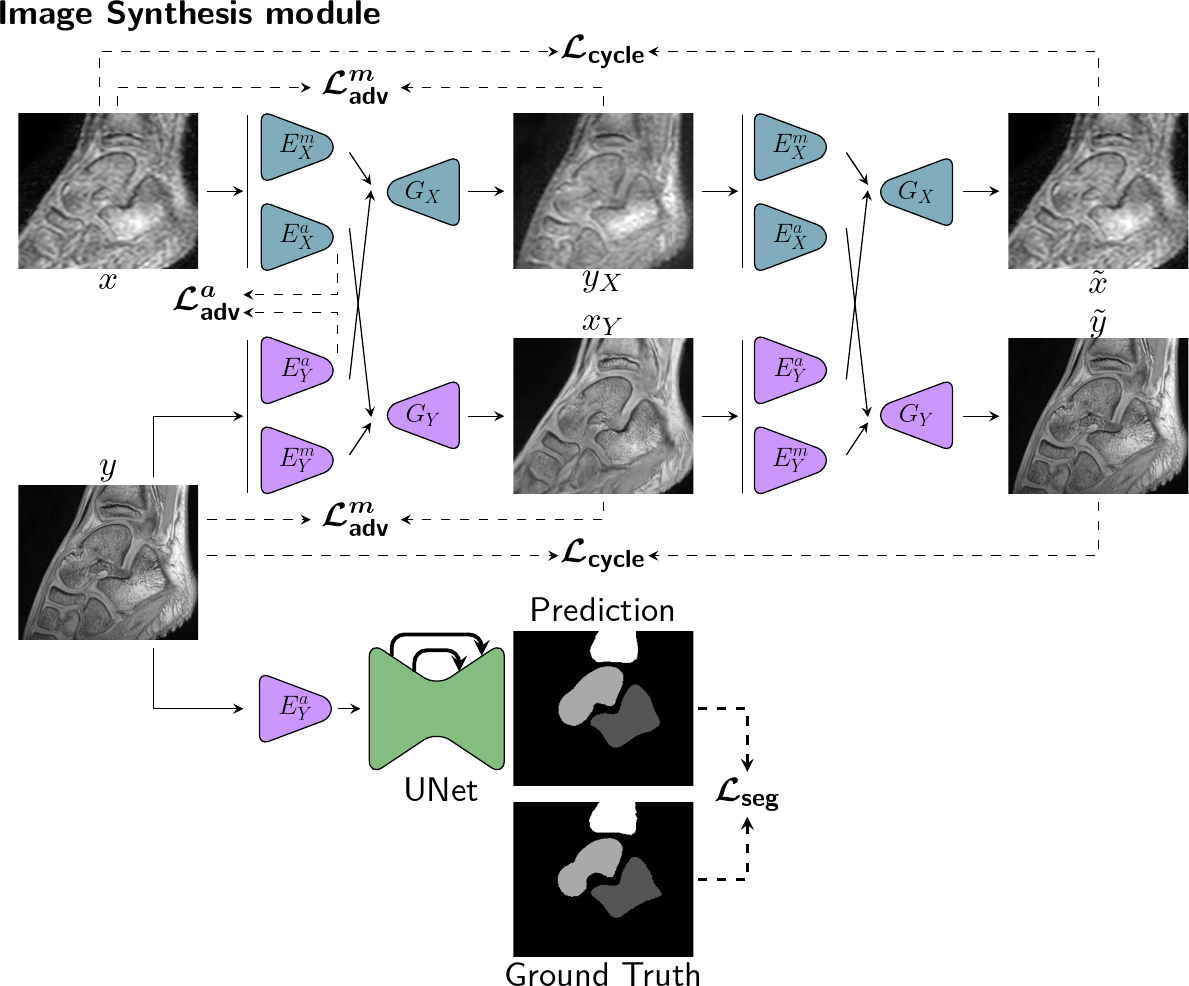Learning disentangled representations for unpaired synthesis of high-resolution dynamic MRI
Claire Scavinner-Dorval1 , Rodolphe Bailly2
, Rodolphe Bailly2 , Bhushan Borotikar3
, Bhushan Borotikar3 , Sylvain Brochard4
, Sylvain Brochard4 , Douraied Ben Salem4
, Douraied Ben Salem4 , François Rousseau1
, François Rousseau1
1: IMT Atlantique, LaTIM UMR 1101 INSERM, Brest, France, 2: Fondation Ildys, LaTIM UMR 1101 INSERM, Brest, France, 3: Symbiosis Centre for Medical Image Analysis, Pune, India, 4: Univ Brest, CHU Brest, UMR 1101, F 29200 Brest, France
Publication date: 2025/02/28
https://doi.org/10.59275/j.melba.2025-e8dc
Abstract
Image-to-image (I2I) synthesis aims at learning the mapping between two visual domains. Due to the scarcity of paired datasets, learning such transformation may be challenging. With a growing number of publications each year, unpaired I2I synthesis has drawn attention from the research community and has found a great application field in medical imaging. Disentangled representation learning constitutes a significant portion of these methods. By relying on the factorization of an image into independent variation latent codes, this approach offers greater control over the result of the synthesis than GAN-based ones. However, disentangling latent representations is not a trivial task and may be influenced by particular inductive bias. In this work, we propose to apply disentangled representation learning to the unpaired synthesis of high-resolution dynamic MRI. We study the impact of both the entanglement module and the addition of a segmentation auxiliary task on the result of the synthesis and the disentanglement of the representations. Our results demonstrate that the choice of the entanglement module greatly influences the learning of a good representation, and that the addition of a segmentation auxiliary task leads to better synthesis performances. Our code is available at https://github.com/cScavinner/Unpaired_image_synthesis
Keywords
Dynamic MRI · Unpaired image synthesis · Disentangled representations learning · Cerebral palsy
Bibtex
@article{melba:2025:002:scavinner-dorval,
title = "Learning disentangled representations for unpaired synthesis of high-resolution dynamic MRI",
author = "Scavinner-Dorval, Claire and Bailly, Rodolphe and Borotikar, Bhushan and Brochard, Sylvain and Ben Salem, Douraied and Rousseau, François",
journal = "Machine Learning for Biomedical Imaging",
volume = "3",
issue = "February 2025 issue",
year = "2025",
pages = "16--37",
issn = "2766-905X",
doi = "https://doi.org/10.59275/j.melba.2025-e8dc",
url = "https://melba-journal.org/2025:002"
}
RIS
TY - JOUR
AU - Scavinner-Dorval, Claire
AU - Bailly, Rodolphe
AU - Borotikar, Bhushan
AU - Brochard, Sylvain
AU - Ben Salem, Douraied
AU - Rousseau, François
PY - 2025
TI - Learning disentangled representations for unpaired synthesis of high-resolution dynamic MRI
T2 - Machine Learning for Biomedical Imaging
VL - 3
IS - February 2025 issue
SP - 16
EP - 37
SN - 2766-905X
DO - https://doi.org/10.59275/j.melba.2025-e8dc
UR - https://melba-journal.org/2025:002
ER -